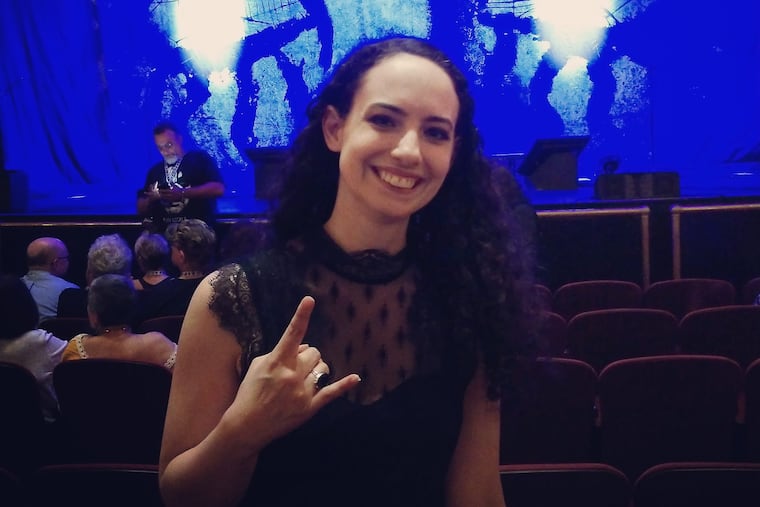Medical mystery: No, she wasn’t imagining that pain
After years of pain and visits with New York specialists, she forgot what it was like to live without stabbing pain in her right side. Then her family doctor in Baltimore made an interesting discovery that sent her to Philadelphia for treatment.

After bouts of kidney stones in 2007 and 2012, Elizabeth Dellario, now in her mid-30s, figured the condition had returned in March 2015 when she once again developed pain in her right side. That pain would decrease when she was lying down but would grow to excruciating levels when she sat upright in a chair.
Over the next year-plus, she visited urgent care and also saw a urologist, an internist, a gastroenterologist and a gynecologist, complete with multiple rounds of imaging. The internist suggested she might have gallstones, though her gallbladder showed no signs of abnormality. The gynecologist ruled out ovarian cysts and ovarian torsion, when an ovary becomes twisted around supporting tissues. The gastroenterologist implied she might have constipation as a side effect of medication. And the urologist told her "it's not your kidney." A diagnosis proved elusive, and her pain persisted.
Dellario forgot what it was like not to be in pain.
She decided to stop seeing doctors in New York, where she lived and worked, and traveled back home to Baltimore, where her mother was a doctor for over 20 years. Her family doctor agreed to do a workup and had her sit up during a portable ultrasound. What appeared next was something even his trained, experienced eyes had never seen before. He asked her urologist in the Baltimore area to read the scans and films, and Dellario, who said she had started to question her own sanity, finally had an answer that proved she wasn't imagining her pain at all.
Solution
Dellario's right kidney was positioned much lower than normal – it was what we call "floating." This condition is called nephroptosis, or "drooping kidney." It is relatively rare; affects more women than men, especially thinner women; and 70 percent of the cases occur on the right side.
In most cases, there are no symptoms, and no treatment is required. Dellario wasn't so lucky.
It is thought that when the kidney slides down, the urinary drainage may get kinked off, causing an obstruction. It is such an obscure diagnosis with vague symptoms that many doctors don't believe that this condition really exists.
She was initially referred to a pediatric urologist in the Midwest, who recommended she see me at Temple University Hospital.
An intravenous pyelogram, an X-ray of the kidneys, bladder and ureters, with contrast, was conducted both with her lying down and standing up. The images revealed that her kidney would slide several inches up and down, depending on her position. After a discussion, we scheduled surgery for October 2016.
The operation, called a nephropexy, lasted about three hours and was performed robotically to minimize bleeding, scarring, post-op incision pain, and recovery time. First, we released her right kidney from its surrounding attachments, then fixed it higher up in the retroperitoneum to prevent it from sliding downward. The retroperitoneum is the space in the abdominal cavity behind the peritoneal cavity, which is where the bowels lie.
The surgery resolved her pain in the area around her kidney, and then a course of physical therapy helped rebuild her core strength and reverse the poor posture she had developed over years of suffering. As she grew stronger, the pain in the surrounding areas (her back, side and upper thigh) also subsided.
It is very unlikely the condition will recur. For now, Dellario says she's a completely different person, with a pain-free life once again.
Daniel D. Eun, M.D., directs the Robotic Urologic Surgery Clinical Fellowship Program at the Lewis Katz School of Medicine (LKSOM) at Temple University and the Minimally Invasive Robotic Urologic Oncology and Reconstructive Surgery Program at Temple University Hospital. He is chief of robotic surgery at Temple University Hospital and a professor of urology at LKSOM.